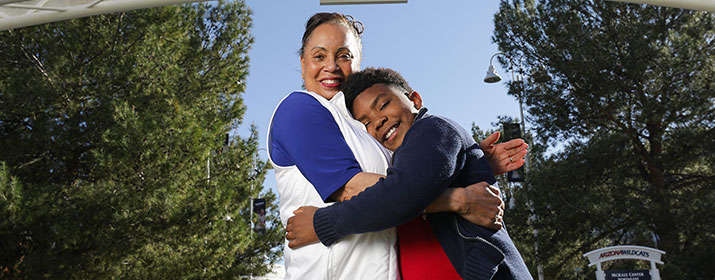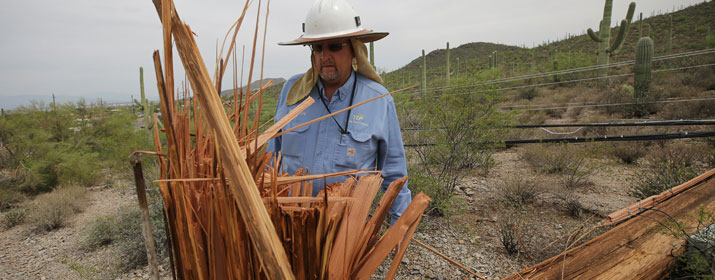
Beverely Elliott hadn’t planned on building a museum in her retirement.
But it can be hard to say no to a 7-year-old grandson who thinks you’re invincible. The idea surfaced when her grandson, Jody, was assigned a report for school during Black History Month.
“Where is the museum I can go to here in Tucson to learn about African American people who lived around here?” he asked.
The offerings were limited. And since he knew she served on an advisory board for an African American Cultural Historical Museum in Washtenaw County, Michigan, he insisted a change was in order. “You’ve got to do something about this,” he pressed. And then he added, “I’ll help you.”
So she started consulting mentors and experts.
And she sat with some of the challenging things she knew and learned about the undertaking. It takes years to build and establish a museum. Museums were shuttering in the pandemic, straining under building, maintenance, security, insurance and other costs as visitation dropped.
But she also sat with the weight of not doing it. “The African American community here is not large, the way it is in some communities. So many of our stories are in oral histories with families, or packed away in boxes in the garage or the back of the closet. Or they’re tossed because there’s no one to pass it along to. It’s too heartbreaking to think of these stories being lost.”
Beverely knew she needed to discuss the plan with her husband, Bob Elliott, an accountant, Arizona basketball legend and longtime board member for TEP’s parent company, UNS Energy. After a family conversation over dinner on April 15, 2021, they agreed to move forward, with Beverely serving as executive director.
“I couldn’t help but think about all of the people who have passed away and we didn’t have a way to capture their contributions,” Bob said. “In life, you can’t change the past. You have to think about the present and plan for the future, which is why this will be such a powerful educational resource for the community and for students. As time moves on, and all of us move on, the museum will still be here.”
Although the museum lives virtually on a robust website right now, a physical site for the museum emerged from discussions with leaders at the University of Arizona. They agreed that the museum would be housed on campus.
With supply chain interruptions, the team is working toward a fall opening, with three permanent exhibits. One will focus on quilts and their importance in the lives of African Americans. A second will share information about the Crown Act, designed to protect against discrimination of natural and cultural hairstyles, and accompanied by a simple display of different hairstyles. A third exhibit will focus on the Buffalo Soldiers and their service to the country and the region. All three of will have a curriculum component for students.
In addition to working with students at the University of Arizona studying Africana Studies and Digital Humanities, the Museum has established partnerships with Tucson Unified School Districts/ African American Student Services Department, as well as the Sunnyside School District and is collaborating with leaders from the City of Tucson.
The Museum has also received a $10,000 “Learning Journey” grant from the African American Legacy Fund, held at the Community Foundation for Southern Arizona, to assist with technology needs and activities for students who visit the museum.
Beverely has been enjoying the discoveries she’s making. She’s learning about how citrus and cotton crops affected the migration of African Americans between Tucson and Phoenix. She learned more about the history of Quincie Douglas, the community advocate who worked to bring neighborhood centers, sidewalks, street lights, and food programs to disadvantaged areas of Tucson and helped spearhead a forerunner to Sun Van transportation service. She learned more about Elgie Batteau, who is considered the first African American student to graduate with a master’s degree from the University of Arizona and who taught in the 1930s at Dunbar School, then a segregated school for African American students.
“There’s so much history here. Some of it is tragic and hurtful by its very nature. But it’s also inspiring because these people were so strong. They didn’t have the term social justice like we do today. What they did back then was stand up for their rights as human beings,” she said.
Tucson Electric Power will be contributing $5,000 to the effort, which will help fund some of the interactive and innovative programming.
“Museums serve as our collective memory so we never forget our stories, or the complex ways our history connects us to the present,” said Wendy Erica Werden, TEP’s Manager of Community Philanthropy and Investment. “The work that the museum founders and advocates are doing is incredibly important to capture the strength that’s in the story of African Americans and their contributions in building our community and our country.”
The museum will feature a hologram welcome. QR codes on the exhibits will lead to deeper discovery. Automated, mobile touchscreen devices will guide students about ways they might research their ancestry and access oral histories. Beverely jokes that as a retiree, she’s moving into a whole new realm of communication strategies.
How does she hope people will approach the museum?
“I want them to come away saying, ‘I didn’t know that,’ because it means they learned something. I want them to emotionally connect with some of these stories and share their own. I want everyone to participate. And I want them to appreciate that the story of African American culture and heritage is the story of American culture and heritage.”
To learn more, please visit https://www.aamsaz.org.
Donations also are being accepted at https://give.uafoundation.org/page.aspx?pid=948&id=96be7e73-d5c8-4c71-9388-95557d7e9870.






